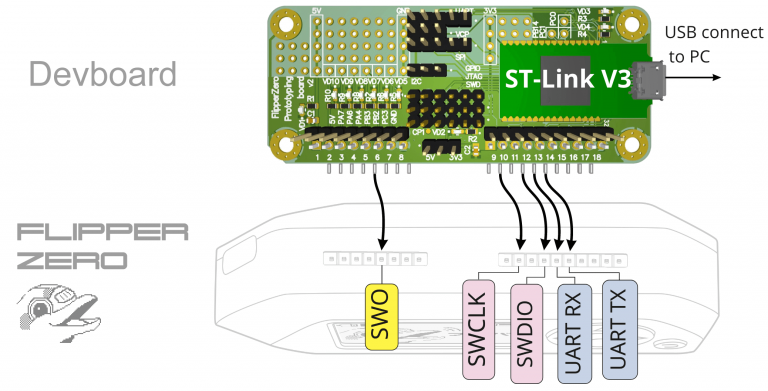where iOS and Android apps will never be useful again
There are still many questions about security and technical capabilities among developers, businesses, and users about progressive web applications. But PWA advocates are not silent either. For example, David Heinemeier Hansson considersthat native mobile apps are no longer a must for B2B startups. I am Vasil, CTO Clevertec. My team and I discussed the pros and cons of PWA and are sharing the results with you.
Briefly about the concepts
PWA – a website that functions similarly to a native app. Any smartphone can launch PWA from your browser.
Native application – a mobile application that is developed specifically for the operating system and, depending on it, is installed on a smartphone from the store: Google Play Store, Apple App Store or another.
Here's what we immediately disagreed with: It goes without saying that PWA is a temporary solution for a startup. A quick and cheap way to get an app to wait for better times, earn money and invest in the development of “real” apps.
In fact, PWA can often cover all business needs. And, moreover, we are sure that there is an area where you can now build strategies with PWA, ignoring native. But more about that later.

When did the opposition between web and native apps begin?
The idea that the web would catch up and displace apps appeared 16 years ago. Steve Jobs presented the idea of web applications that look and behave like mobile applications.
In the early 2010s, there was an idea that this moment was about to arrive. But the native only strengthened its position.
The time has come. Besides, a year ago an iOS update was released with some essential features for PWA. For us as a team with development experience fintech applications and mobile banks This means that we can now make (and do make) PWAs that are virtually indistinguishable from native in terms of functionality and user experience.
By the way, Apple made a lot of noise in February: they announced that in iOS 17.4 will disable support PWA for users from the European Union. This meant that web applications would no longer be able to send notifications and store user data. However, in early March, the decision was cancelled due to a large resonance.

We find and explain the arguments in favor of PWA
Money. Business always considers costs. The cost of developing a progressive web application will be approximately a third less native development.
If we simplify the calculations, then at first glance the cost of development should be half as much. But in reality, we take into account the cost of analytics, design, testing, and the total amount is about 30% lower.
An indirect benefit of PWA is saving effort and money on team management. Native applications always have two of them, because universal developers for Android and iOS are now hard to find. Managing two teams and synchronizing development between them and the server part is more difficult than working with one more homogeneous team.
Access independent of operating system
Now the web has grown technologically, and in parallel, a trend is developing towards fragmentation of mobile operating systems. They talk about developing their own OCs Xiaomi, Huawei. And this fragmentation will not be at all to the native’s advantage.
PWA looks like a strategically more advantageous option. When you have a PWA with a common code base, it is enough to follow browser standards so that the application works well for all users. However, if a new operating system becomes dominant, and you have a code base for iOS and Android, you will have to quickly assemble a team and write a new application so as not to lose customers.
Let's say a few words about independence from stores. On the one hand, this is a plus, on the other hand, it can scare away users, since applications are not checked like in stores.
Update speed
All updates are instantly available. Businesses don't have to wait for approval in stores and then waste resources trying to convince the client to update the app.
User convenience
The technology assumes that a PWA with its own icon is placed on the desktop. It looks absolutely like an application. The user does not even suspect that it is actually a web.
And PWA takes up much less space on the device than a native application. Compare: PWAs usually “weigh” a few megabytes, while mobile applications weigh tens or even hundreds of megabytes.
Exposing the bottlenecks of PWAs
Native app advocates usually make compelling arguments against PWAs. But we'll argue with them, too.
What about performance?
The performance was indeed a concern. Technically, PWA is still slower than native. But with modern devices, this difference is almost unnoticeable for banking-type apps. It might be noticeable on weak devices, some old models, but not on most modern ones.
How to deal with UI/UX differences across platforms?
Android and iOS have different UX style guides, they provide different user experiences. And although the platforms are now moving towards each other in this regard, there are still differences. For example, Android has a “back” gesture, and iOS only has “Home”. There are not many of them, but they exist and for now this is a disadvantage of PWA. Which, by the way, can be mitigated. It depends on the skill of the developers. Any cross-platform technology, including PWA, can mimic. It understands that it works on iOS and rebuilds the interface to be familiar to the user.
PWAs cannot collect user data
It would be nice for a business to track users, create a profile, collect additional data for marketing purposes. PWA applications really have fewer opportunities for this compared to a native application.
But on the other hand, there are more opportunities for privacy. There are fewer means to intercept passwords, eavesdrop, track user locations and actions without warning, or “spoil” data from other applications on the device. This is not very obvious, but technically it is true: malicious applications (viruses, Trojans) are practically impossible, and users benefit from this.
Can PWA and native work together?
Let's try to find a way to bypass PWA limitations by combining it with the capabilities of a mobile application.
In our practice, we have such a usage scenario. We created an application that contains native functions. It shows web content in a built-in browser. And when web content needs access to native functions or the native needs something from the web, they interact with each other through the interface we developed.
This is called a hybrid app. It combines some of the benefits of a PWA and a native app.
So, everyone will have to switch to progressive web apps?
We see a clear trend that PWA will displace native. But on the other hand, a huge code base already exists on native. It is impossible to abandon all mobile applications at once.
The transition is an investment, and not a small one. But with an eye to the future. If the business plans to exist for a long time and develop, then most likely it will be justified. Perhaps in this case it will be possible to kill the native application and continue to develop only PWA.

At the moment, we don’t see any signs that native will somehow displace PWA in the banking app industry.
Because the main features that were sorely lacking: access to biometrics, push notifications, access to the address book, the ability to intercept SMS with one-time passwords and other things are already available. In fact, this is all that is needed to make a good and secure banking application.
In what cases do we still not recommend PWA?
When computing power or direct access to hardware is needed. Let's say games that require access to direct graphics, complex animation.
If you need background tracking. Some hardware features are still not available in PWA. You can't access location, microphone when the device is locked. For apps like banking, this is not a limitation, but, for example, you can't make a music player or navigator.
If the application uses specific libraries, which are not available on the web. For example, a wrapper for working with a server or a specific file format.
Case from our experience: Native applications have a library for document recognition. In our case, it is needed so that a field bank employee can scan a passport or other documents using a camera. This way, he does not enter data manually, but only checks it.
For a long time, this application existed as a native one, because there was no corresponding web library. And this was a restraining factor for development. Now the necessary library has appeared, but it has been years before that moment.
But no business will agree to wait for this event in idleness.
Instead of a conclusion
Because the conclusion here, as in any comparison of technologies, cannot be unambiguous. Which path to choose depends on the specific tasks and characteristics of the business.
Indeed, all things being equal, if you are developing banking or similar applications from scratch today, it makes a lot of sense to invest in PWA rather than native. This will give you independence from stores and mobile platforms.
What do you think are the prospects for progressive web apps? Let's discuss.
If you are interested in the technical side, our developers have already told you:




